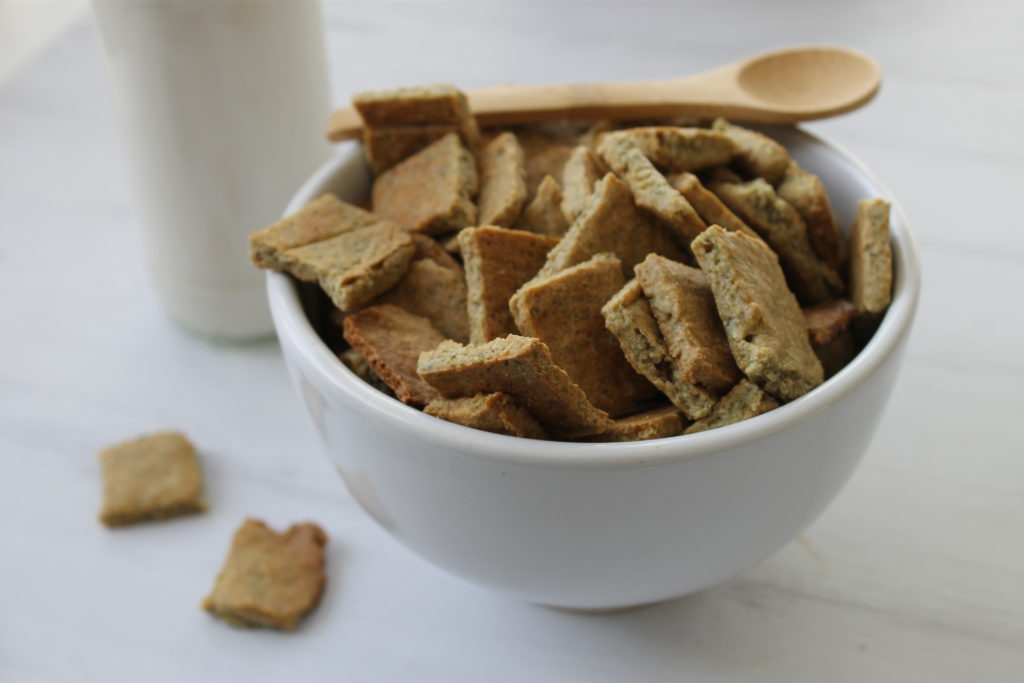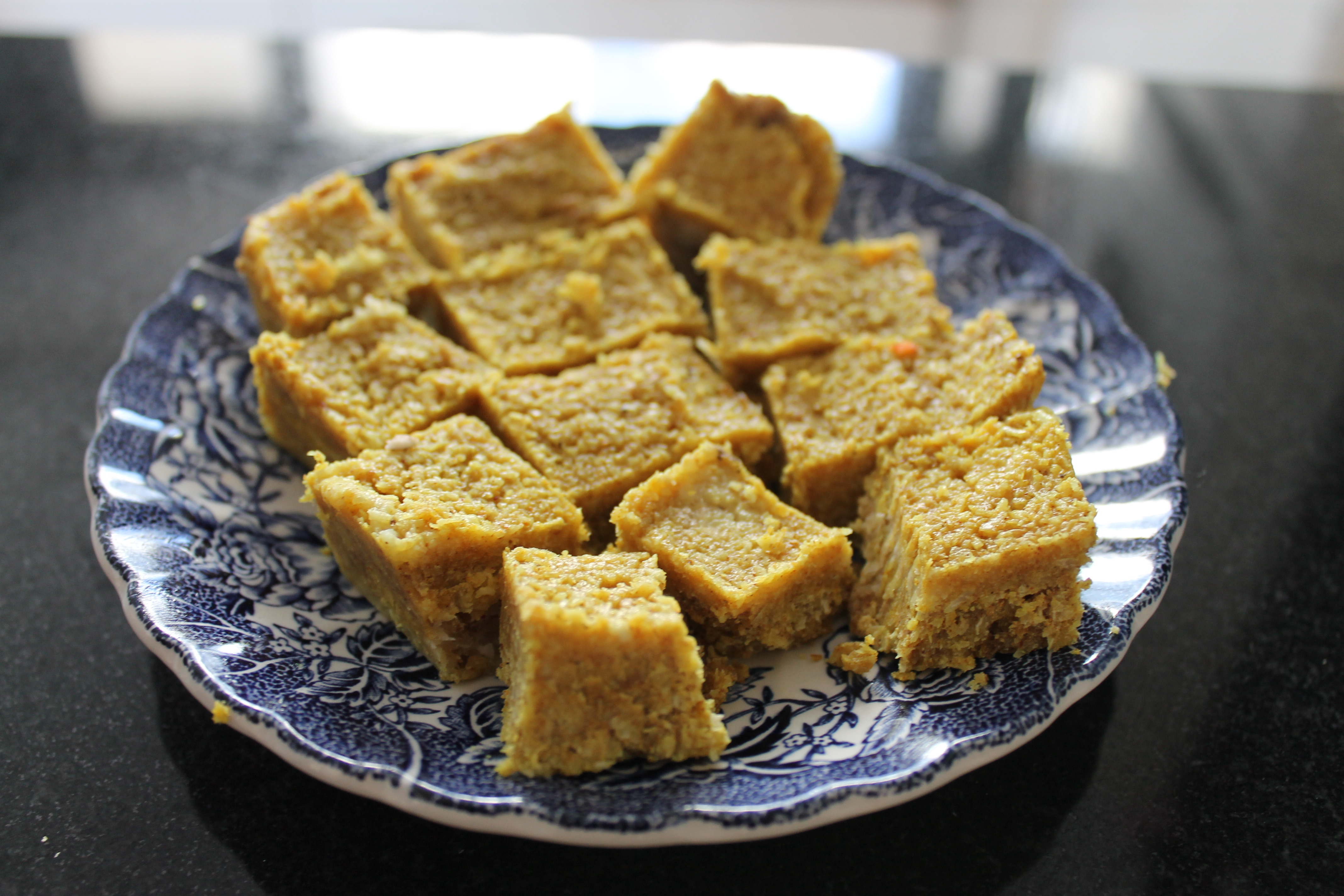A few months ago I learned that I had a sensitivity to eggs, and they were a staple of my diet. I used them in baked good and ate them for breakfast, lunch and dinner.
But since giving up eggs my daily issues with anxiety have largely vanished. I’ve also lost a few pounds. So the tradeoff of giving up one of my favorite foods has been worthwhile.
And since eggs are such a common food sensitivity, I knew I was not alone. And it inspired me to write about egg-free breakfast options.
What do I eat for breakfast?
Many of my clients struggle with what to eat for breakfast, even if eggs are ok for them. But people who can’t eat eggs have a harder time because breakfast is full of simple carbs. And simple carbs feed overgrowth in the gut and destabilize blood sugar.
Taking yourself for a blood sugar rollercoaster ride will make you feel off balance, both physically and emotionally.
Eating right for gut health and diminishing IBS symptoms, requires stable blood sugar. For people with egg sensitivities, that makes breakfast the hardest meal of the day.
So I’m going to help with more than 20 egg-free breakfast options below. I have many more recipes and options for biome-feeding, anti-inflammatory, low sugar breakfasts here.
The best diet is a diverse one to create/feed a diverse microbiome. Diversity is key for gut health and immunity. It makes for a strong biome.
Eating the same foods daily will not promote this desired diversity.
My breakfast options are all gluten free, mostly grain free, low in sugar and includes variety.
A great experiment is eating a different breakfast every day and writing down how you feel a few hours later.
At the end of the week notice where type of meal made you feel the best. Those highest is fat, protein or carbs? Or an even mix of the three? This is great information about what you body needs to function best.
Why blood sugar matters
Unstable blood sugar spikes stress hormones, crashes energy and destabilizes mood. A blood sugar balancing breakfast will make you feel your best.
If you tolerate eggs, eating them every day can raise your chance of becoming sensitive to them, especially if you have intestinal permeability like I did. People with a permeable gut lining are more likely to become sensitive to foods they eat often.
Yet, another reason why diversity is key. It can help stave off food sensitivities.
The good news is that many food sensitivities can be eliminated if you avoid that food completely for 6 months. That’s how long it takes IgG antibodies to die.
The following are breakfast ideas, not specific recipes.
For specific recipes, I have a many healthy, blood-sugar balancing breakfast options and allergen free treats in my treat cookbook.
Egg free breakfast ideas
Avocado sweet potato toast (bake and toast sliced sweet potato and top with mashed avocado)
Coconut breakfast bites (the picture at the top of this post features a no-bake mix of coconut meat, nut butter, coconut oil and your choice of nuts, dried fruit or spices. Get the recipe here.
Broth based soups: When I had SIBO, I ate broth soups for breakfast. To spice up the broth I added: salt, fresh herbs (cilantro, basil, sage), paprika, cumin and a teaspoon of coconut oil.
To make it more hearty you can add rice noodles, veggies and pulled chicken. Add greens like spinach for bonus points or some coconut aminos and squirt or sriracha to boost flavor. This is a great winter breakfast.
Smoothies are so easy. And blending your fruits, veggies or nuts make them easier to digest. Green smoothies are my favorite way to get greens into my diet. For extra nutrition add 1/2 cup of bone broth or steamed frozen veggies like zucchini or pumpkin. Nut butter and protein powders boost protein and fats for a balanced breakfast that balances blood sugar. Smoothies with too much fruit can destabilize blood sugar but berries and one bananas, plus protein, fiber and fat will keep it stable.
Cassava tortillas: Homemade cassava tortillas are a mix of cassava flour, oil, salt, water and oil. You can cook them in a pan or bake them. Google “cassava tortillas” for recipe options. You can buy cassava flour here. Cassava is a root veggie native to Africa. It is full of prebiotic fiber and resistant starch.
Spaghetti squash breakfast porridge: You can get the recipe from my cookbook or find one online. It’s a comforting and low-carb mix of spaghetti squash, coconut milk and a touch of sweetener. Amazing.
Rice pudding or conjee: White rice is one of the most tolerated grains because it is simple to digest. It breaks down at the top of the small intestine so it won’t feed microbial overgrowth.
Eat it in half cup portions and mix it with fat to slow the blood sugar spike. I add full fat coconut milk to my rice pudding. Conjee is a watery rice porridge made by tripling or quadrupling the amount of water or broth you usually put in rice. Serve it with chives or the green part of the onion stalk and protein, like chicken sausage.
Chia pudding: A mix of chia seeds and non-dairy milk turn into a filling pudding. One of the easiest recipes you can make and full of fiber and protein. Caution not everyone is able to tolerate the insoluble fiber in chia seeds.
N’oatmeal: A mix of shredded coconut, nut butter and banana. Recipe in my cookbook or just wing it.
Potato oxtail hash: Stir fry cooked, diced white potatoes with some fatty oxtail meat to create a hash. Top with green onion stalks or fresh herbs.
Egg free banana bread: I just made delicious banana bread that swaps the binding power of eggs with 1/2 a cup of liquid and some tapioca flour or flax flour. I added shredded carrots to my banana bread to up the fiber. Recipe is in my cookbook.
Green plantains cooked with turkey bacon and wilted spinach in coconut oil: Green plantains are unripe and look like a large banana. They taste like potato when cooked in coconut oil. They are full of anti-inflammatory resistant starch. Just peel them, slice them and pan fry them in coconut oil. Amazing.
Single ingredient banana pancakes: Bananas are the world’s most amazing fruit. Did you know you could blend them and put them in a waffle maker to make single ingredient waffles. Add a teaspoon of melted coconut oil, a tablespoon of nut or seed butter and a tablespoon of flax seed flour to the waffle dough to ease the blood sugar spike and serve with a dollop of coconut cream (the solid part of refrigerated coconut milk) .
Plantain waffles: You can make plantain waffles the same way you make banana waffles, from either ripe and unripe plantains. Just blend and pour the dough in the waffle iron. Detailed recipe is in my cookbook.
Israeli salad with hummus, carrots and/or plantain chips (add turkey salami for added protein): Israeli salad is just diced tomatoes and cucumbers. Dress with Greek yogurt, salt and dill or lemon juice and olive oil. Serve with plantain chips (you can buy them here), hummus and baked or raw carrots.
https://diyhealthblog.com/free-recipes/Shredded carrot salad: you need strong digestion to eat raw carrots. This is a light and detoxifying breakfast that supports the liver and helps balance hormones like estrogen. Shred carrots and apples (sub pineapple for low FODMAP), squeeze some lemon, mix in a teaspoon of honey or maple and mix in a tablespoon of almond flour. Top with dairy or coconut yogurt. Detailed recipe in my cookbook.
Pumpkin porridge: Mix canned pumpkin with coconut milk or almond milk and add nuts, fresh fruit, a touch of sweetener and flax seed flour or nut flour.
Fritters: Mix 1 cup of spaghetti squash or mashed sweet potato with 2 tablespoons of tapioca starch and 1 tablespoon of coconut flour, a pinch of salt and cook fritters in a hot pan with coconut oil.
Homemade sausage with a side of greens and gluten free toast: It’s so easy to make your own sausage. Just mix ground raw meat with your favorite dried or fresh spices. Sage and fennel are particularly tasty sausage spices.
Homemade granola with coconut yogurt. There are a few recipe in my cookbook and lots of free ones one line. Top with berries.
Coconut crepes with chia jam and nut butter. You can buy coconut wraps here. Chia jam is just a mix of fresh or frozen blueberries and chia seeds. Low sugar, so good for you and very yummy. I have a recipe in my book but there are plenty of free ones online.
Portobello mushroom stacks: Roast a portobello mushrooms and choose from these toppings: crab salad, wilted spinach, nut cheese, smoked salmon, homemade or store bought sausage, pesto or olive tapenade, sun dried tomatoes.
Kitcharee or dahl: An East Indian version of rice and beans (lentils) spiced with turmeric and with veggies added. Google the recipe if you have no issues with digesting beans.
Salmon pinwheels : Spread nut cheese or avocado on a grain free or gluten free tortilla. Layer on smoked and roll up into a log. Secure with toothpicks.
Overnight oats (regular and grain free): Make sure you buy gluten-free certified oats as oats are highly contaminated with gluten. Soak raw oats overnight in non-dairy milk of choice. Add berries, yogurt or nut butter. To make a grain-free version swap the oats for shredded coconut and a teaspoon of chia seeds. Two parts milk to one part oats.
Ratatouille: Stir fry a mix of eggplant, tomato, bell pepper and zucchini. Cook in coconut oil and add salt and your favorite herbs. Serve with a side of sausage or avocado sweet potato toast.
That’s 25 nutritious options to spark your imagination. Something for everyone hopefully. The hardest part is figuring out what to try first.
If you like to bake simple recipes check out my pumpkin breakfast cereal in my cookbook. It will make you feel like a kid again.



